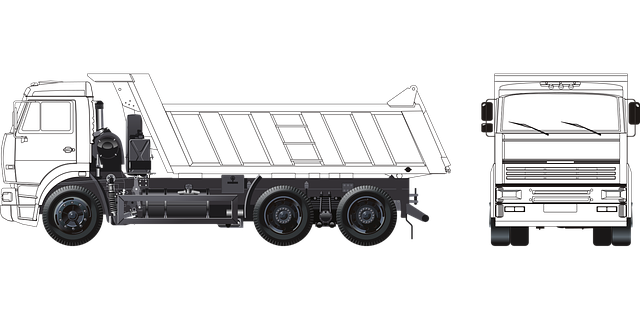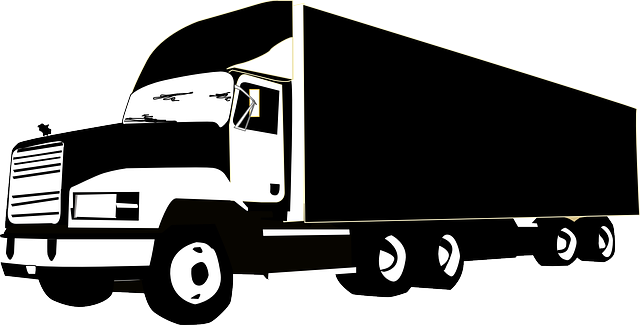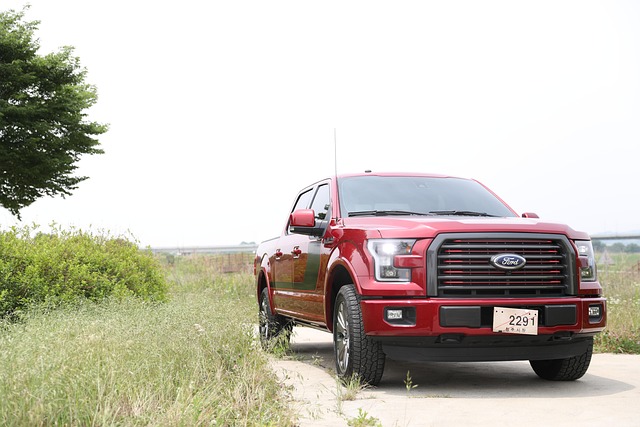Looking to register your car in California? This comprehensive guide walks you through the entire process. First, understand key requirements for car registration in California, including specific rules for out-of-state vehicles. Gather essential documents, especially your Vehicle Identification Number (VIN), for verification using a reliable VIN verifier. Next, conduct a vehicle history report to ensure the car’s legitimacy. Visit the DMV, submit your application, pay fees, and receive your license plate – all straightforward steps to legal California car ownership. Don’t forget to use our tips for choosing a trusted VIN verifier throughout.
- Understand California Car Registration Requirements
- Gather Necessary Documents for VIN Verification
- Perform a Vehicle History Report Using VIN Verifier
- Visit the DMV and Submit Your Application
- Pay the Registration Fees and Receive Your License Plate
Understand California Car Registration Requirements

Before registering your car in California, it’s crucial to understand the state’s specific requirements for vehicle identification number (VIN) verification. California law mandates a thorough VIN inspection to ensure that all vehicles on its roads meet safety and environmental standards. This process involves checking the vehicle’s history, including any previous accidents or outstanding issues.
A key component of this verification is using a reliable vin verifier, which can be done through a mobile vin inspection service. These services offer convenient, on-site VIN checks that simplify the registration process. By employing advanced technology, they ensure accurate and immediate results, allowing you to address any potential issues before finalizing your car’s registration in California.
Gather Necessary Documents for VIN Verification

Before registering your car in California, you’ll need to gather essential documents for a Vehicle Identification Number (VIN) verification process. This step is crucial as it ensures the vehicle’s authenticity and history are accurately checked. For a smooth registration experience, prepare all these documents beforehand:
1. The vehicle’s title, which shows ownership details and the VIN.
2. A valid driver’s license or state-issued ID card.
3. Proof of insurance, indicating you have the appropriate coverage for your car.
4. If applicable, a lienholder’s agreement or proof of release from any existing loans on the vehicle.
5. A completed California Vehicle Registration Application form (DMV Form RV 52). You can obtain this from the California Department of Motor Vehicles (DMV) website or local DMV office. Additionally, you might need to provide a mobile vin verification or undergo a vin inspection as part of the registration process, ensuring your vehicle meets all legal standards.
Perform a Vehicle History Report Using VIN Verifier

Before registering your car in California, performing a Vehicle History Report using a VIN Verifier is an essential step. This process allows you to access crucial information about the vehicle’s past, ensuring it has not been reported stolen, has no outstanding recalls, and hasn’t undergone unauthorized structural changes. A VIN Verifier, often offered by online platforms or mobile apps, provides a comprehensive report within minutes using the unique Vehicle Identification Number (VIN) of your car.
Conducting a mobile vin verification or vin inspection can save you time and effort compared to traditional methods. It’s as simple as entering your VIN into a trusted verifier’s system, which then cross-references the data with various databases, including state records, manufacturer reports, and national theft networks. This quick and efficient process empowers you to make informed decisions about purchasing a used car or ensuring the integrity of your current vehicle before proceeding with registration in California.
Visit the DMV and Submit Your Application

Once you have gathered all necessary documents and information, it’s time to visit your local California Department of Motor Vehicles (DMV) office. Bring along your vehicle’s registration from another state, proof of ownership, and identification documents for all drivers who will be listed on the registration. At the DMV, locate the section dedicated to vehicle registration and present your paperwork. An employee will guide you through the process and ensure that all details are correct.
During this visit, you’ll need to submit an application form, which can usually be done online or in-person. Here, you’ll provide essential information about your vehicle, including its make, model, year, and unique Vehicle Identification Number (VIN). It’s crucial to use a reliable VIN verifier like a mobile VIN verification service or conduct a traditional VIN inspection to ensure the accuracy of this number. This step is vital for proper record-keeping and ensuring your car’s authenticity.
Pay the Registration Fees and Receive Your License Plate

After completing your vehicle’s registration application, it’s time to pay the necessary fees and receive your license plate. The California Department of Motor Vehicles (DMV) will assess charges based on your vehicle’s type and age. These fees cover the cost of registration, vehicle identification number (VIN) verification, and license plate issuance. You can typically pay these fees online or in person at a DMV field office.
Should you require a more convenient option, consider utilizing a mobile VIN inspection or verification service. These services send a professional to your location to perform the VIN verifier process, ensuring a swift and hassle-free experience without the need to visit a DMV. With this alternative, you can focus on other tasks while awaiting the completion of your vehicle’s registration, including its license plate.
Registering your car in California involves understanding specific requirements, gathering essential documents, and completing a Vehicle History Report using a VIN verifier. After verifying your vehicle’s details, you can visit the DMV, submit your application, pay the registration fees, and receive your license plate. Ensure all steps are followed accurately to ensure a smooth process.
